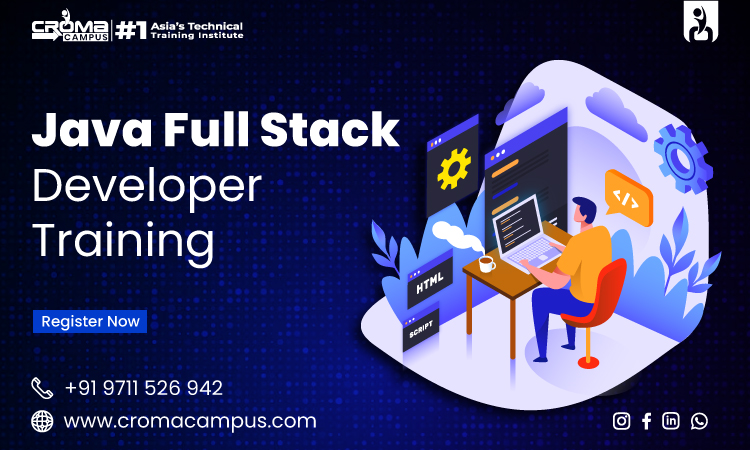From Basics to Brilliance: Java Full Stack Mastery
 Sanvi Sahay
Sanvi Sahay
Introduction
In the dynamic world of web development, mastering a full-stack programming language is essential for creating robust and scalable applications. Java is known for its versatility and reliability. Moreover, it has been a milestone in the software development landscape for decades. And in the future too it will continue to serve its purpose because of its features. To enter this domain one need to pursue a course in the same. So, Java Full Stack Developer Training is beneficial for one who wants to learn this technology.
The Basics:
Java is an object-oriented, class-based programming language, and is celebrated for its "write once, run anywhere" feature. To begin our full-stack journey, one must first grasp the fundamentals of Java programming. So, this includes understanding variables, data types, control structures, and object-oriented principles such as classes and inheritance. Moreover, aspiring Java developers should also familiarize themselves with Java's rich set of libraries and APIs, which provide powerful tools for handling everything from input/output operations to networking and database connectivity. Hence, learning how to work with data structures and algorithms is crucial for efficient and optimized code.
Backend Development with Java:
Spring, an open-source framework, simplifies Java development by offering a comprehensive set of tools for building enterprise-level applications. So, it covers aspects such as dependency injection, aspect-oriented programming, and data access, providing a cohesive environment for building scalable and maintainable backend systems.
However, Java Persistence API (JPA) is another crucial aspect of backend development. So, it allows seamless interaction with databases, promoting efficient data storage and retrieval.
Building Restful APIs:
Modern web applications heavily rely on Restful APIs for communication between the front end and back end. So, Java excels in creating such APIs, and the Spring framework, specifically Spring Boot, makes it remarkably straightforward. Spring Boot's convention-over-configuration approach minimizes boilerplate code. Thus, allowing developers to focus on business logic rather than setup intricacies. So, with just a few annotations, a Java developer can build powerful Restful APIs. Hence, facilitating smooth communication between different components of a web application.
Frontend Development with Java:
A true full-stack developer must possess expertise not only in backend technologies but also in front-end development. JSF simplifies the creation of user interfaces for Java web applications. Hence, providing reusable components and a model-view-controller (MVC) architecture. On the other hand, JavaFX allows the development of rich client applications with a modern look and feel. As a result, supporting features such as multimedia, 2D and 3D graphics, and animation.
Testing and Quality Assurance:
Ensuring the reliability and stability of a full-stack application is a critical aspect of the development process. However, Java provides a variety of testing tools and frameworks to support the creation of unit tests, integration tests, and end-to-end tests. Additionally, tools like Mockito and TestNG complement JUnit, providing developers with a comprehensive testing toolkit. Continuous Integration (CI) and Continuous Deployment (CD) practices further enhance the quality assurance process, automating the testing and deployment pipeline.
Conclusion
Mastering Java full-stack development is a journey from understanding the basics of Java programming to seamlessly integrating frontend and backend technologies. This is possible by pursuing a Full Stack Developer Course In Hyderabad. Moreover, with the powerful tools and frameworks available, Java developers can create scalable, maintainable, and feature-rich applications that meet the demands of the modern web development landscape. Whether it is building robust backend systems with Spring or crafting dynamic user interfaces with JavaScript, a full-stack Java developer possesses the skills to take a project from basics to brilliance. Furthermore, as technology continues to evolve, staying on top of the latest advancements in both Java and web development will ensure that developers continue to succeed in this dynamic and exciting field.
Subscribe to my newsletter
Read articles from Sanvi Sahay directly inside your inbox. Subscribe to the newsletter, and don't miss out.
Written by
